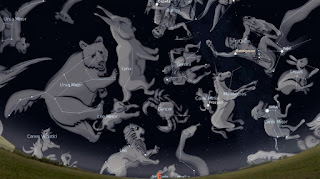NATURE MONCTON INFORMATION LINE, December
25, 2020 (Friday)
To respond by e-mail, please address
your message to the information line editor, nelsonpoirier435@gmail.com .
Please advise the editor at nelsonpoirier435@gmail.com if any
errors are noted in wording or photo labelling.
For more information on Nature Moncton, check the website at www.naturemoncton.com .
Edited by: Nelson Poirier nelsonpoirier435@gmail.com
Transcript by: Louise Nichols nicholsl@eastlink.ca
Info Line # 506-384-6397 (384-NEWS)
** Kevin Renton updates Christmas
activity at their Stilesville feeder yard.
COMMON
REDPOLLS [Sizerin flammé] have
arrived, but still at 6 to 10; AMERICAN TREE SPARROWS [Bruant hudsonien] are up from 4 to 6; PINE GROSBEAKS [Durbec des
sapins] stay
around 20; and EVENING GROSBEAKS [Gros-bec errant] are at least 100+.
The Grosbeaks prefer platform feeders.
** RUFFED GROUSE [Gélinotte huppée] are very well fed over the winter by
foraging on the nutrition-packed buds on trees, and that’s where we tend to get
nice chances to see them, especially in late afternoons. Bob Blake reports they have 3 Ruffed Grouse
doing just that in trees in his Second North River yard, and he has seen their
trails in the snow. Bob is
photographically challenged, so no photos.
So hopefully someone will be able to get photos of both to share
soon. The tracks and trails of grouse
are easily recognized.
** It’s Friday and time to review what
will appear in the sky as 2020 closes out and 2021 begins, courtesy of sky-guru
Curt Nason.
This Week’s Sky at a Glance, 2020
December 26, 2021 January 2
This week, check out the eastern sky around 10 pm to hunt down four dogs, three
cats, two bears, a hare, a snake and a crab. Oh, and a unicorn if you believe
in them.
Start looking toward the southeast where Orion is hunting. Below his feet is
Lepus the Hare, staying immobile in hopes that Orion’s canine companions
overlook him. Can you see the ears pointing to Rigel? Following Orion’s belt to
the left brings you to sparkling Sirius at the heart of Canis Major the Big
Dog, and it doesn’t take a great imagination to see a dog in this group of
stars. Orion’s shoulders and head form an arrowhead that points toward bright
Procyon, one of only a few visible stars in Canis Minor the Little Dog. Use
your imagination to see Monoceros the Unicorn between the two dogs.
Now find the Big Dipper in the northeast. It forms the rear haunches and tail
of Ursa Major the Big Bear, and from a rural area the legs and head of the bear
can be seen easily. The two stars at the front of the bowl of the Dipper point
northward to Polaris at the end of the handle of the Little Dipper, which is
officially Ursa Minor the Little Bear. Below the handle of the Big Dipper are
the two main stars and hounds of Canes Venatici the Hunting Dogs, seemingly
nipping at the big bear’s butt.
Well below the bowl of the Big Dipper is Leo the Lion, recognized by the
stellar backwards question mark of its chest and mane, with Regulus as its
foreleg and a triangle forming its tail and hind leg. A faint triangle of stars
between Leo and the Big Dipper is Leo Minor, the Little Lion. The third cat is
Lynx, a faint line of stars running from Little Leo and past the front of Ursa
Major. Between Regulus and Procyon is the head of Hydra the Water Snake, which
will take much of the night to rise completely. And faint, crabby Cancer is
above Hydra’s head. Stay warm and dry, and Happy New Year hunting.
This Week in the Solar System
Saturday’s sunrise in Moncton is at 8:00 am and sunset will occur at 4:39 pm,
giving 8 hours, 39 minutes of daylight (8:02 am and 4:47 pm in Saint
John). Next Saturday the Sun will rise at 8:01 am and set at 4:45 pm,
giving 8 hours, 44 minutes of daylight (8:03 am and 4:53 pm in Saint John).
Next Saturday morning the Earth will be at perihelion, its closest point to the
Sun. Don’t put your parka away.
The Long Night Full Moon occurs near midnight Tuesday evening. I have fond
memories of December full Moons hanging above the trees in the northwest at
sunrise. Jupiter spends the week distancing from Saturn, and within a few weeks
they will be lost in twilight so get your last looks in while you can.
Telescope users might have a final view of Jupiter’s Red Spot before 6 pm on
Monday. Although dimming, Mars rules over the early evening sky at its highest
around 7:30. Venus has the morning sky to itself, rising 90 minutes before
sunrise midweek.
With astronomy meetings and outreach activities on hold, you can watch the
local Sunday Night Astronomy Show at 8 pm, and view archived shows, on YouTube
at: https://www.youtube.com/channel/UCAEHfOWyL-kNH7dBVHK8spg
Questions? Contact Curt Nason at nasonc@nbnet.nb.ca.
Nelson Poirier,
Nature Moncton
